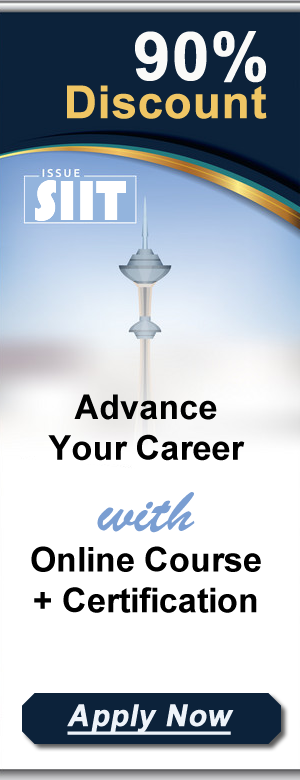
Alaska Family Science Event Explores Auroras And Rocket Science
Section 1: A Glimpse into Alaskan Rocket Science
The frigid Alaskan landscape provided a unique backdrop for a remarkable family science event. On January 28th, the Fairbanks BEST Homeschool group partnered with the Geophysical Institute at the University of Alaska Fairbanks (UAF) to host an afternoon dedicated to rocket science, hands-on activities, and a captivating planetarium show. The event, free and open to the public, attracted an impressive 200 attendees, demonstrating a strong public interest in space exploration and scientific research, even in the face of challenging winter conditions. This enthusiasm underscores the growing public engagement with STEM fields and the crucial role of community outreach initiatives. The event showcased the collaborative spirit between educational institutions, research organizations, and community groups in promoting scientific literacy. This collaborative model is a testament to the power of partnerships in advancing STEM education. The success of this event underscores the need for more such initiatives.
The focus of the event was on two NASA sounding rocket missions: Ground Imaging to Rocket investigation of Auroral Fast Features (GIRAFF) and Black and Diffuse Aurora Science Surveyor (BaDASS). These missions aim to unravel the mysteries surrounding auroras, those breathtaking displays of light in the polar skies. Auroras are caused by charged particles from the sun interacting with the Earth's atmosphere, a complex process governed by the dynamics of space weather. Understanding this phenomenon requires sophisticated scientific instruments and collaborative research efforts, precisely what these NASA missions represent. The event provided attendees with a rare opportunity to engage directly with the scientists working on these missions. This kind of direct engagement is often missing from science education, which usually relies on textbooks and lectures. The event allowed for a more holistic understanding of scientific processes.
Section 2: Engaging the Community with Heliophysics
The planetarium presentations provided a deeper dive into Heliophysics, the study of the Sun and its influence on the solar system. NASA's heliophysics research focuses on three core questions: the impact of solar changes on humanity, the response of Earth and the solar system to solar changes, and the causes of solar variability. These fundamental questions address issues with far-reaching implications, from disruptions to communication and power grids to the evolution of planetary atmospheres. The presentations effectively linked these grand scientific questions to the everyday lives of the attendees, creating a more relatable and engaging learning experience. Such a connection to real-world applications is vital for promoting public interest in science.
The event extended beyond lectures, incorporating hands-on activities centered around the Sun, provided by the University of Alaska Museum of the North. These interactive elements were crucial for engaging a diverse audience, particularly families with children. The hands-on activities offered a practical approach to learning, enabling participants to actively engage with scientific concepts rather than passively receiving information. This approach aligns with modern educational best practices, emphasizing active learning and kinesthetic engagement. Moreover, this strategy effectively addressed the varied learning styles of the participants, making the event inclusive and accessible.
Section 3: Citizen Science and Educational Outreach
The event's success can be attributed, in part, to its association with the Science for Alaska Lecture Series and the 2025 NASA Sounding Rocket campaign. This collaboration highlighted the power of synergistic partnerships in promoting STEM education and research. Such collaborations leverage the expertise and resources of multiple organizations, enhancing the impact and reach of the initiative. By integrating the event within a larger series, the organizers ensured sustained engagement and broader community participation. This approach is vital in creating a thriving ecosystem for scientific inquiry. The incorporation of the NASA Sounding Rocket campaign further strengthened the event’s relevance and scientific credibility, adding a practical and immediate context to the subject matter.
Furthermore, the organizers actively promoted NASA's Aurorasaurus citizen science project, encouraging participants to continue learning and contributing to scientific research even after the event concluded. Citizen science projects provide a valuable avenue for public engagement, allowing individuals to actively contribute to scientific discovery. This creates a sense of ownership and investment in the scientific process. Aurorasaurus, specifically, empowers citizens to contribute valuable data on aurora sightings, contributing to a more comprehensive understanding of this phenomenon. Such initiatives are particularly effective in promoting STEM education and career exploration.
Section 4: Expanding the Reach of STEM Education
The positive feedback from families and the surrounding community is a testament to the event's impact. The enthusiastic response underscores the strong public demand for engaging STEM outreach programs. This highlights the need for increased investment in STEM education and community engagement initiatives. Such programs foster a scientifically literate citizenry and nurture a future generation of scientists and engineers. The success of this Alaskan event serves as a model for other communities seeking to engage their populations with STEM subjects. The event’s success demonstrates the effectiveness of strategic partnerships and engaging programming in promoting scientific literacy.
The event also showcased the importance of inclusive and accessible STEM education. By providing a free, public event, the organizers ensured that participation was not limited by economic barriers. This commitment to inclusivity broadened the event’s reach and impacted a wider segment of the community. Such inclusivity is essential for promoting equity in STEM education and ensuring that all members of society have opportunities to engage with science. This principle aligns with national and international efforts to make STEM education more representative and accessible.
Section 5: Implications and Future Directions
The Alaskan family science event serves as a case study for successful STEM outreach. Its collaborative nature, engaging activities, and connection to cutting-edge research demonstrate a model that other organizations can replicate. The success of this model lies in understanding the audience’s needs and tailoring the event accordingly. The use of hands-on activities and the integration of citizen science programs demonstrate a profound understanding of effective educational strategies. This is crucial to make STEM concepts accessible and exciting.
Moreover, the event highlights the growing importance of citizen science in scientific research. By engaging the public in data collection and analysis, scientists can gather more comprehensive data and foster a greater appreciation for scientific methods. Citizen science projects also empower individuals to contribute to scientific advancement, fostering a deeper connection to the scientific community. The event's success demonstrates the potential of citizen science to engage the public in meaningful scientific endeavors.
The future of STEM outreach should focus on similar collaborative efforts, engaging programs, and inclusive practices to promote scientific literacy and foster the next generation of scientists and explorers. Sustained investment in STEM education is crucial for national competitiveness and societal progress. The event demonstrated that this investment can translate into increased public understanding and engagement with science. The demonstrated success also highlights a path for promoting equity and accessibility in STEM fields. This approach guarantees diverse representation in the scientific community.

